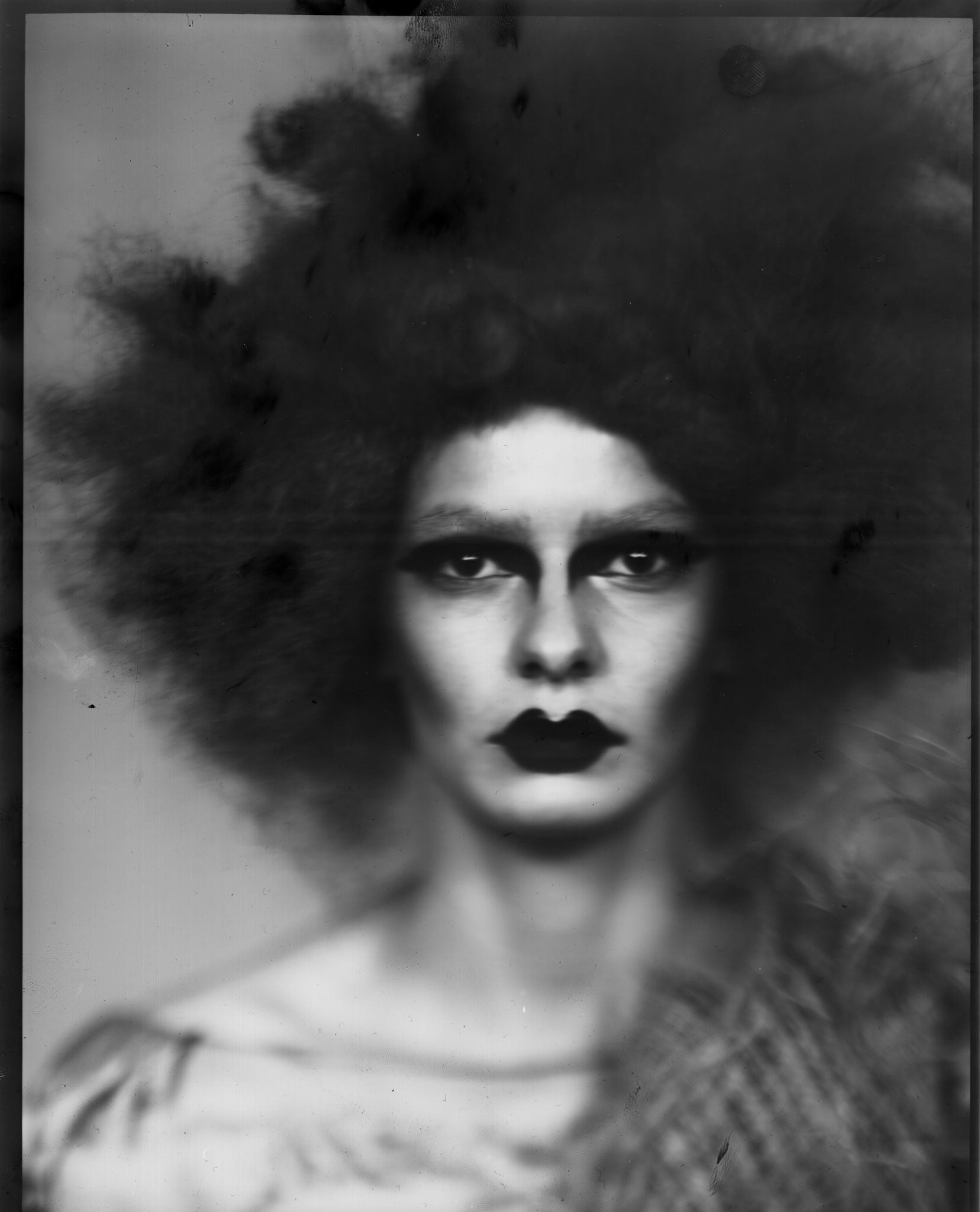Deconstructed and reconstructed: spring's make do and mend looks
Spring's DIY mood is pulled to pieces and recaptured in ragamuffin designer looks and a clutch of custom-crafter couture. As styled by Amanda Harlech
Plus: Photographers Walter and Zoniel on their homemade camera

We ripped it up and started again, as stylist Amanda Harlech took existing clothes from Loewe, Laura Ashley, Chanel, Yohji Yamamoto, Meadham Kirchoff, Prada and even M&S and asked dressmakers to customise them to create these unique, inimitable designs.
Then our photographers Walter and Zoniel used their customised DIY camera to capture the looks for posterity.
Spring's ragamuffin designer looks
Show all 8Salt of the earth: the old-fashioned magic behind Walter and Zoniel's DIY imagery
The images on the gallery above were shot on a lens created in around 1880. In fact, they were shot on two: one embedded in a modern re-imagining of a Victorian gentleman's camera; the other welded to a digital camera back.
Both are DIY, the creations of a young art duo known as Walter and Zoniel. They're resolutely down-to-earth. Even the elaborate constructions of their cameras are more homemade Bitsa than haughty Bauhaus. Their first – a box camera constructed in a 10,000 sq ft studio space in east London – was the size of a small suburban bedroom, or a large shed. It took six months to build, each session necessitating the erection of a portable dark-room and the fresh mixing of caustic chemicals to develop their imagery.
They've whittled their latest down to suitcase-scale: a lens eight inches in diameter embedded in a stout leather case, created in collaboration with British luggage firm Globe-Trotter. That was used to photograph the black-and-white images. Walter and Zoniel's literal fusion of past and present manifests itself most literally in their latest tool: a digital camera with a brass-bound 19th-century lens welded to the front, used to create their colour counterparts.
But what's the point, when Photoshop could simply recreate the results? Well, it can't. It can imitate, but never equal. "Most people forget that glass is a liquid," states Walter, making sweeping, meaty gestures with his hands. "Imagine, these lenses have been on their side, on a shelf, for 50 years," he cleaves one through the air in a downwards motion, "The glass moves! Every one is different." What that leads to is a frustratingly glorious voyage of discovery, mapping out the individual follies of each lens. Pouncing on mistakes, turning them into new visual treatments. Creating something unique. "You can't fake that," states Walter. "That's the thing."
The idea of the unique work – that vital phrase that bumps up the price of a fine art piece – is vital to Walter and Zoniel's process. Each digital image is different thanks to those distorted lenses; and rather than shooting on to negatives, the black-and-white photographs are shot straight on to photographic paper.
Come summer, the duo will be creating another piece of work themed around the idea of the unique image in the age of mass reproduction. Coinciding with the Tate Britain exhibition Salt and Silver: Early Photography 1840-1860, their next major work is titled Salt Print Selfies.
The simple moniker belies a complex narrative of process. Isolated booths allow visitors the chance to take self-portraits: a digital negative is printed, then each sitter's face is steamed (bear with me), and a canvas is dabbed on the face to soak up the salt ("like the Turin shroud"). The salt contained in the sweat creates the final print, in that forgotten 19th-century fashion, with variations between each sitter's sebaceous secretions ensuring each piece is unique. The final step involves the canvas slips being sewn together.
"It's nice to use old-fashioned techniques, but they don't necessarily work in exactly the same way," says Zoniel – of their camera, specifically, but it can be applied to their work as a whole. "We wanted to use something different".
Subscribe to Independent Premium to bookmark this article
Want to bookmark your favourite articles and stories to read or reference later? Start your Independent Premium subscription today.

Join our commenting forum
Join thought-provoking conversations, follow other Independent readers and see their replies